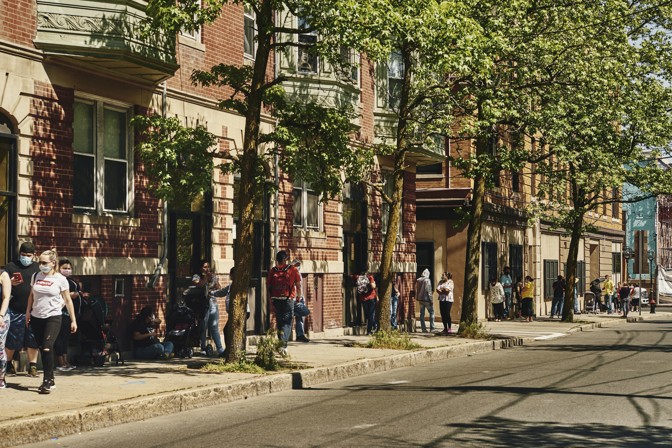Where Fears of Deportation Made the Pandemic Worse
Posted by admin on
Photographs by Tony Luong
On a Friday afternoon in mid-April, Gladys Vega received a disturbing message: A woman hospitalized with COVID-19 needed food for the 11-year-old daughter she’d left at home. Worried that the girl would go hungry, Vega rushed out of her office and into the tangle of downtown Chelsea, Massachusetts, a 1.8-square-mile city across the Mystic River from Boston. The 52-year-old Vega, wearing a black tracksuit, a highlighter-yellow T-shirt, and a little bit of matching eye glitter, jumped out of the car so quickly, I could barely keep up. She approached a narrow brick apartment building and asked the people on the stoop to open the front door. “You don’t have to worry; I’m not immigration,” Vega said in Spanish. “Let me in.”
Vega was accustomed to convincing fearful Chelsea residents to trust her. More and more restrictive federal immigration measures had motivated some locals—day laborers, food-factory workers, janitors, and other employees now deemed “essential”—to leave as few traces of their presence as possible: using P.O. boxes instead of their own mailboxes at home, and steering clear of public buildings where Immigration and Customs Enforcement had made arrests.
In late February, new Trump-administration regulations took effect that radically expand whom immigration officials judge to be a “public charge”—permanently dependent on government aid—and thus ineligible for a green card. The rules allow officials to deny green-card applicants if they have used food stamps, Medicaid, housing assistance, or other safety-net programs that were previously exempt from consideration.
Vega, the executive director of a social-justice organization called the Chelsea Collaborative, believes that these measures have made it more difficult for immigrants to get the care and support they need to stop the spread of COVID-19. Out of fear of triggering the new public-charge rule, immigrants in Chelsea have been disenrolling from public services, worsening the overcrowding, food insecurity, and poor access to health care that make the area so vulnerable to the coronavirus.
By mid-April, the infection rate in Chelsea was six times higher than the state average, comparable to the rate in the hardest-hit boroughs of New York City. With the support of local officials, Vega is trying to use the credibility she’s earned over decades of fighting slumlords, predatory bosses, and scammers to persuade the hardest-hit families to use a makeshift social safety net—and to go to the hospital despite their fear that doing so will be weaponized against them later.
“Because they’re afraid of their status,” Vega said, “they will not speak up.”
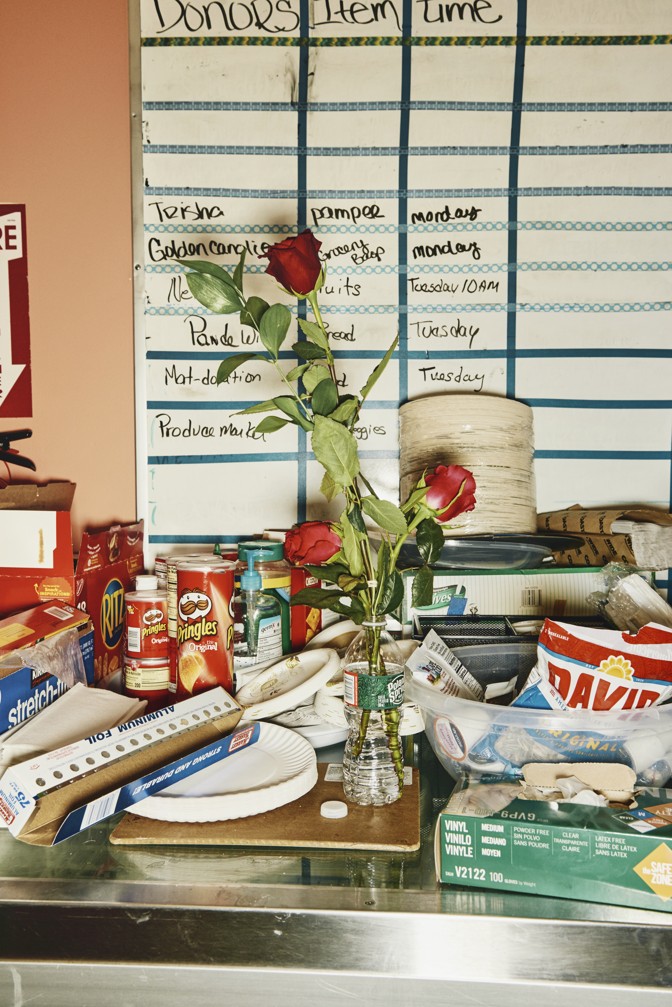
The message about the girl in need of food, Vega learned, was outdated: Her mother had returned home earlier that day, after spending a week in the hospital. Still wheezing, the woman stood in the doorway wearing pajama pants, a gray overcoat, and a surgical mask. She told me she had deferred care for two weeks, and went to the hospital only when she could no longer breathe. Vega had prepared a box of bread, corn flour, beans, cookies, cooking oil, and milk. “God bless you,” the woman said. One floor below, several families who appeared sick were crammed into a handful of rooms. Vega gave them a box too.
Forty-two years ago, in the midst of the blizzard of 1978, Vega’s parents moved her from a farm in Puerto Rico to their own cramped apartment in Chelsea. The city, the climate, the language—it was “a nightmare,” she told me.
Her cousins in town spoke only English, so she became close with the other Spanish-speaking kids in school—mostly children who had fled the Central American civil wars of the 1980s with their families. Vega came to understand that her classmates didn’t see parents or relatives left behind for years at a time, because of immigration restrictions. “My passion for organizing came from those classrooms,” she said. By seventh grade, Vega was protesting cuts to bilingual education with a 700-student walkout she’d organized.
The newly formed Chelsea Collaborative hired her as a receptionist in 1990, when she was 21. From the beginning, she was a troublemaker. “I liked to challenge the status quo,” she told me. She set about trying to “manage up,” and to persuade her boss, the executive director, to put Latinos on the board. Her playbook: She’d gently inquire about a retirement party for a current board member. Then she’d line up a replacement, drop hints about all the funding her new pick could bring in, and order a plaque for the presumptive retiree. She tried to make it effortless for her boss to take her advice. “That’s how I moved out all of these older white men,” she said with a laugh.
Vega witnessed the first major wave of immigrant disenrollment from safety-net programs when Congress passed the Clinton administration’s welfare-reform law in 1996. The legislation, along with an immigration bill passed the following month, restricted green-card holders from using some federal benefits during their first five years in the country. Vega was working as a community organizer for the Chelsea Collaborative by then, holding large meetings at the Saint Rose of Lima Catholic church, where she was connecting immigrants with employment and educational opportunities. After the new laws passed, Vega recalled, immigrants felt that “to take any public assistance, you needed to bleed for [the government] to trust you. It was similar to what is happening now in terms of public charge.”
[Read: ‘We are like sitting ducks’]
Around the same time that Vega was organizing at Saint Rose, Michael Fix, who is now a senior fellow at the nonpartisan Migration Policy Institute, received a sheaf of data from public-health officials in Los Angeles County that showed just how many noncitizens used public benefits before and after the laws took effect. The impact was apparent immediately, he recalled when we spoke. “I thought, Holy hell, what’s going on here?” Immigrant participation in health services had dropped sharply even among those who technically still qualified. Refugees, for instance, were unaffected by the new rules, but their participation in Medicaid fell 39 percent.
Fix and other researchers began to study these spillover consequences, concluding that they represented a chilling effect. Even immigration authorities were worried, especially about what the chilling effect would mean for public health. “Growing confusion is creating significant, negative public health consequences across the country,” the Immigration and Naturalization Service, which granted green cards at the time, wrote in 1999. “This situation is becoming particularly acute with respect to … the treatment of communicable diseases.”
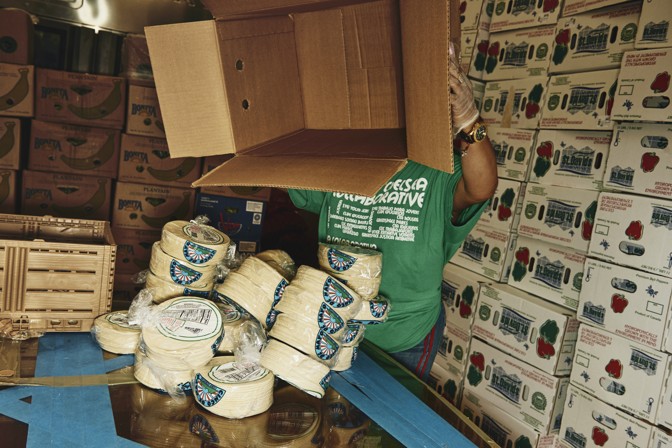
Last summer, as the Trump administration’s beefed-up version of the public-charge rule sped toward approval, doctors and social workers at Massachusetts General Hospital’s clinic in Chelsea contacted Vega because they were concerned that immigrants were avoiding health care. The chilling effect was at work again. She brought clinic representatives to a street fair at Saint Rose full of food stalls and kids playing games on a warm evening. They walked around greeting attendees. “Please come back to MGH Chelsea,” Vega recalled the providers saying. “We miss you as patients.”
The expansion of the public-charge rule, Fix told me, is best understood as way to favor affluent immigrants without having to go through Congress—a major victory for immigration hard-liners. According to an estimate by the liberal Center on Budget and Policy Priorities, the new standards are so restrictive that if they were applied to everyone in the United States, up to half of all Americans could be deemed a public charge and thus not qualify to settle in the country.
The current chilling effect has not been measured. But Tiffany Joseph, a sociologist at Northeastern University who studies health access in Boston’s immigrant neighborhoods, told me, “You should not underestimate how much the fear of ICE raids and the public-charge rule worsened the pandemic in Chelsea.”
Jessica Zeidman, a primary-care doctor at MGH Chelsea, told me that she saw disenrollment continue to intensify in the months before the pandemic hit. In December, for instance, a newly pregnant patient ended a checkup with a goodbye: She told Zeidman that she wouldn’t be seeing her anymore, for fear of triggering the rule, which would go into effect two months later. Zeidman tried to persuade her not to withdraw from WIC, the federal nutrition program for women, infants, and children, because the new restrictions wouldn’t apply to pregnant women.
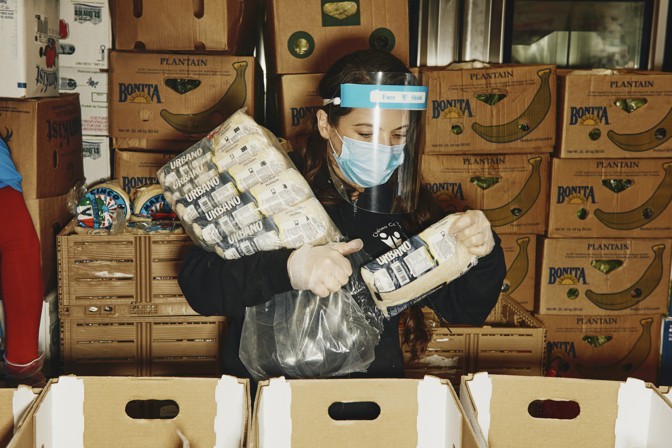
“Most of the patients I have that have talked about disenrolling are not even actually affected by the rule; they just think they are,” Zeidman told me. “Part of its power is [that] it affects many, many more people than it’s actually written to affect.”
Around the same time, another one of her patients, a man in his 50s, opted to remove his name from a public-housing waiting list, even though he was eligible for the benefit, because he was afraid of somehow triggering the rule and preventing other family members from obtaining green cards. As the pandemic spread, Zeidman wondered whether he was still stuck in overcrowded housing, risking infection.
By early April, immigrant patients showed signs of serious illness, after waiting as long as possible to seek care, Zeidman said. Almost all of them had labored breathing and a high fever.
“We’re reaping what we’ve sown,” she said.
In March, Citizenship and Immigration Services, the agency that issues green cards, announced that it would not penalize immigrants who sought health care for COVID-19 under the public-charge rule. But the agency stopped short of putting the rule on hold; instead, it’s giving immigrants an opportunity to prove to authorities that the health care they use is directly related to the pandemic before they are deemed a public charge. “If you go to the hospital and it turns out you’re [COVID-19]-negative, and actually what you have is some other ailment, you’re screwed,” Wendy Parmet, a law professor at Northeastern, told me. At a hearing last week for a legal challenge to the public-charge rule, a federal judge put it this way: “Basically, the rule right now is: If I’m dying from coronavirus, it’s not used against me, but if I’m dying of cancer, it is used against me.”
Like its predecessor agency did in 1999, the Department of Homeland Security acknowledged last year that expanding the public-charge rule could lead to “worse health outcomes” and “increased prevalence of communicable diseases.” However, those risks are worthwhile, the agency argued, because they increase “self-sufficiency” among immigrants.
But “none of us can be self-sufficient in the face of a widespread epidemic,” Parmet said almost two years ago, in a Health Affairs column that warned against the impacts of the public-charge rule. These were easy dots to connect after a decade studying immigration and infectious disease, she told me. “It was obvious,” she said. “Should a pandemic arise, you have a perfect time bomb.” But “it’s getting a little scary when Cassandra proves true.”
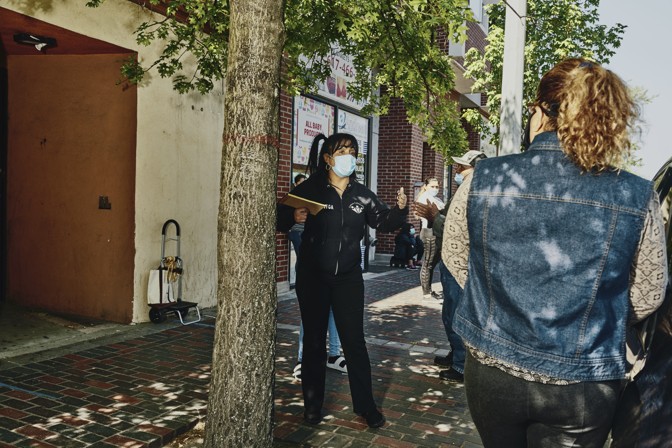
Before the pandemic hit, Vega felt like she was on the verge of two big victories. A bill Chelsea Collaborative was backing that would allow undocumented Massachusetts residents to get a driver’s license was gaining momentum. And, after two years of preparation, she was ready to mobilize an army of staff and volunteers to ensure a historic response level to the U.S. census. She was already imagining the new roads and fixed-up schools that census-driven funding would bring, once her people managed to convince Chelsea residents that their information wouldn’t be shared with ICE.
Now her volunteers are instead trying to get the community to quarantine safely. In mid-April, the city of Chelsea partnered with neighboring towns to rent space at a Quality Inn where sick residents could convalesce without spreading the disease to family members in overcrowded housing. Hardly anyone showed up. “The rhetoric from Washington over the last four years has made people fearful of seeking help,” Tom Ambrosino, Chelsea’s city manager, told me. “That’s where efforts are stymied.”
[Read: Sick migrant children are at the whims of U.S. border guards]

Vega learned that a 48-year-old undocumented food-factory worker was self-isolating in a basement, sleeping on a piece of plywood next to a space heater despite the scattered April snow showers. When we spoke a week later, after Vega intervened, the man was comfortable and feeling better, spending the day watching TV in the Quality Inn. MGH nurses checked on him at intervals. He didn’t know what would happen to his job at a frozen-fish processing plant, or how he would make the $350 rent he pays for the room he shares with another man in a two-bedroom apartment.
By early May, the makeshift safety net seemed almost institutional. The Chelsea Collaborative’s storefront headquarters on Broadway Street looked something like the stockroom of a grocery store, ripening bananas and mangoes stacked along walls brightly painted with murals. A tower of donated Pampers reached the ceiling.
Vega had sliced her hand open while unloading a pallet of pineapples and wore a hot-pink bandage over a dozen stitches. She’d swapped her business-casual attire for sweats weeks ago, and her perfume for disinfectant. “I used to wear Chanel,” she said. “Now it’s Lysol.” Her voice had worn down to a squeak.
But she seemed energized by the work. “They rely heavily on us because they trust us,” she said. “These families have an urgent need, and I have to find it in me to make things happen for them.”
Stimulus checks would not be arriving for the undocumented. For now, they would wait for food and diapers in a line that stretched down the street, around the block, and back to the front door of La Collaborativa.
